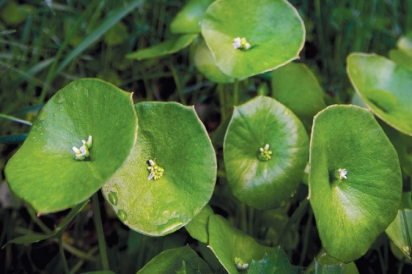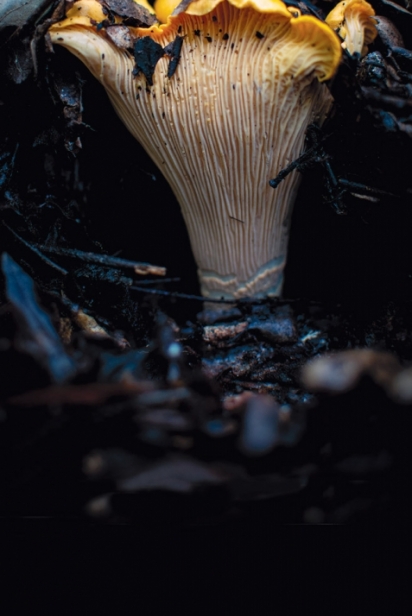Wild Spring Salads
Spring is the time for fresh wild salads and, depending on the rain, mushrooms. A good portion of what we think of as “weeds” popping up in our yards this time of year are actually edible and packed with nutrition. Instead of spraying them with herbicides or tossing them in the trash, try a fresh wild salad with your favorite dressing or a vibrant pesto to brighten up a meal with the flavors of spring. Here are a few interesting edibles to keep an eye out for:
CHICKWEED (Stellaria media)
A mild-tasting wild annual, chickweed can be found widespread in moist and shady areas and gardens alike. This small leafy plant is great to snack on and has been used both as a food and an herbal remedy to treat a variety of ailments.
Why Should We Eat It? Some studies have found that chickweed may aid in weight loss, reduce inflammation and promote wound healing. It is very high in vitamins A and C, iron, calcium and other minerals, making it comparable to domesticated spinach.
Harvesting: Tender chickweed tops can be snipped easily with scissors and collected in a basket. One helpful tip to identify chickweed is to notice the single line of fine hairs that runs the length of the main stem. Be careful of harvesting in highly trafficked areas and roadsides due to possible contamination and accumulation of toxins.
Try It! Great in salads and pestos, this leafy little green is best when fresh. It also makes a nice microgreen and garnish.
MINER’S LETTUCE (Claytonia perfoliata)
Also known as Indian lettuce or winter purslane, this native spring annual can be found along shady hillsides, creeks and canyons. It is a unique and delicate bright green plant with tiny white or pale pink flowers that protrude from the center of a round or disk-shaped leaf.
Why Should We Eat It? Entirely edible, miner’s lettuce is rich in vitamin A, C and iron, along with antioxidant and anti-inflammatory properties. It was used by native people as a spring tonic.
Harvesting: Collect sparingly. This small plant is also very easy to grow at home in a garden or in containers. Miner’s lettuce is an annual native plant that is losing natural habitat every year.
Try It! The mild-tasting succulent leaves are a bright and fresh addition to spring salads or used as a substitute for other leafy greens. Their mature cup-like leaves add an interesting shape and texture, making it fun for children to appreciate as well.
CHANTERELLE MUSHROOMS (Cantharellus californicus)
Our local species of chanterelle, found under live oak trees is the largest in the world—with some specimens weighing in at over two pounds. These mushrooms have a desirable firm texture and mild aroma that is sometimes described as fruity.
Why Should We Eat It? Besides their unique umami flavor, chanterelles are high in B and D vitamins as well as compounds that help regulate the immune system, which prevents illness.
Harvesting: Despite being bright orange, these fungi can be a little tricky to find. Usually covered in thick layers of duff, chanterelles in our area rarely emerge from their hiding spots before they decompose. Gently pull the mushroom from the soil, while being careful not to disturb the area around them.
Try It! A simple sauté in butter or oil makes chanterelles easy to add to many dishes from pastas to soups, or paired with meats. Chanterelles don’t dry very well (what a shame) but can be cooked and frozen for later use, or fermented or pickled.







